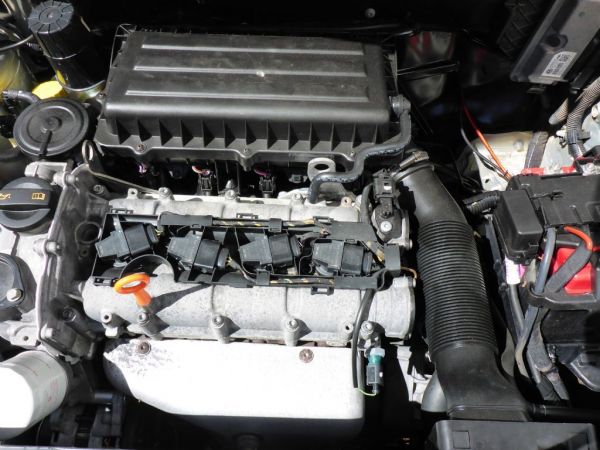Exactly How a Clp Engine Can Boost Effectiveness in Various Industries
The introduction of CLP engines marks a substantial change in functional efficiency across different markets, driven by their capacity to optimize fuel consumption and lessen downtime. As companies progressively prioritize sustainability along with performance, the duty of CLP engines becomes even more vital.
Summary of CLP Engines
CLP engines, or Continual Fluid Propellant engines, stand for a considerable development in propulsion technology, particularly for room applications. These engines use a constant feed system that enables the continual expulsion of propellant, bring about improved effectiveness and efficiency contrasted to conventional strong or hybrid propulsion systems. By keeping a continuous circulation of liquid propellant, CLP engines can achieve extra exact thrust control, which is crucial for steering spacecraft in different goal situations.
The design of CLP engines incorporates advanced products and cutting-edge fuel management systems. clp engine. This leads to reduced weight and raised dependability, essential factors for long-duration space objectives. Additionally, the continual operation decreases the risk of burning instability, a common difficulty in conventional rocket engines.

Advantages in Production
The production of Constant Fluid Propellant (CLP) engines offers several remarkable benefits that boost both efficiency and cost-effectiveness. Among the key advantages is the structured production process, which decreases the complexity connected with traditional propulsion systems. By utilizing fluid propellant, producers can achieve better precision in engine performance, leading to enhanced power result and reduced waste.
In addition, CLP engines facilitate a higher degree of modularity, permitting for less complicated integration right into numerous production lines. This versatility can dramatically decrease preparations and enhance total operational flexibility. Using CLP modern technology likewise tends to reduce the need for considerable upkeep as a result of less relocating components, which converts into lowered downtime and operational prices.

Applications in Logistics
Leveraging Continuous Liquid Propellant (CLP) engines in logistics provides considerable advantages in operational efficiency and reliability. These engines offer a durable service for different transportation needs, enabling the seamless activity of items throughout huge ranges. The fundamental style of CLP engines permits consistent power output, which translates right into smoother and extra foreseeable transportation schedules.
One of the vital applications of CLP engines in logistics remains in sturdy freight transport, where they can drive both ground and aerial lorries. Their capacity to preserve high performance under differing lots try this out conditions makes visit this site right here certain that distribution timelines are fulfilled, consequently enhancing customer complete satisfaction. Additionally, CLP engines can be incorporated into automated logistics systems, helping with real-time tracking and maximizing course preparation.
Furthermore, the sturdiness of CLP engines reduces upkeep downtime, enabling logistics companies to optimize their operational capacities. This is particularly beneficial in warehousing procedures, where performance in managing and transferring items is important. As logistics continues to advance, the combination of CLP engines stands for a forward-thinking technique that not just enhances performance but additionally supports the sector's growing needs for reliability and speed.
Effect On Power Effectiveness
Just How do Constant Liquid Propellant (CLP) engines enhance energy performance in transport? CLP engines utilize a regular flow of fluid gas, enhancing combustion procedures and preserving a secure thrust output. This layout lessens power losses connected with typical combustion engines, where fuel shipment can differ and cause inefficiencies.
The constant procedure of CLP engines enables a more effective thermal cycle, leading to greater specific impulse compared to traditional engines. clp engine. This converts to reduced fuel usage for the very same quantity of work done, considerably decreasing functional prices throughout various transportation sectors, consisting of aeronautics and maritime industries
Furthermore, the capability of CLP engines to preserve ideal efficiency under differing tons problems minimizes the need for frequent acceleration and deceleration, even more improving fuel efficiency. Improved energy efficiency not only adds to cost savings however likewise causes reduce greenhouse gas discharges, lining up with worldwide sustainability goals.
Future Trends and Innovations
Emerging developments in Continuous Liquid Propellant (CLP) engine modern technology assurance to change the landscape of transport effectiveness and sustainability. As markets pivot toward greener alternatives, CLP engines stand at the center, incorporating ingenious materials and layout techniques that enhance performance while decreasing ecological effect.
One of one of the most appealing trends is the fostering of crossbreed systems that integrate CLP engines with renewable resource sources. This synergy can maximize gas usage and reduce emissions, straightening with worldwide sustainability goals. Furthermore, innovations in computational fluid dynamics (CFD) are facilitating the layout of more aerodynamically efficient engines, bring about decreased drag and improved gas effectiveness.
Furthermore, the development of smart tracking systems is readied to enhance operational efficiencies. These systems leverage information analytics and IoT innovation to maximize engine performance in real-time, guaranteeing that the engines operate within their most efficient clp engine specifications.
As research study remains to discover alternative propellant solutions-- such as biofuels and synthetic fuels-- the future of CLP engines looks appealing. By harnessing these innovations, industries can not only enhance their performance however also add substantially to a cleaner, extra lasting future in transport.
Final Thought
In final thought, CLP engines stand for a considerable improvement in effectiveness across several industries. The integration of advanced materials and less relocating components lessens maintenance requirements, while alignment with sustainability objectives placements CLP engines as an essential innovation for the future.